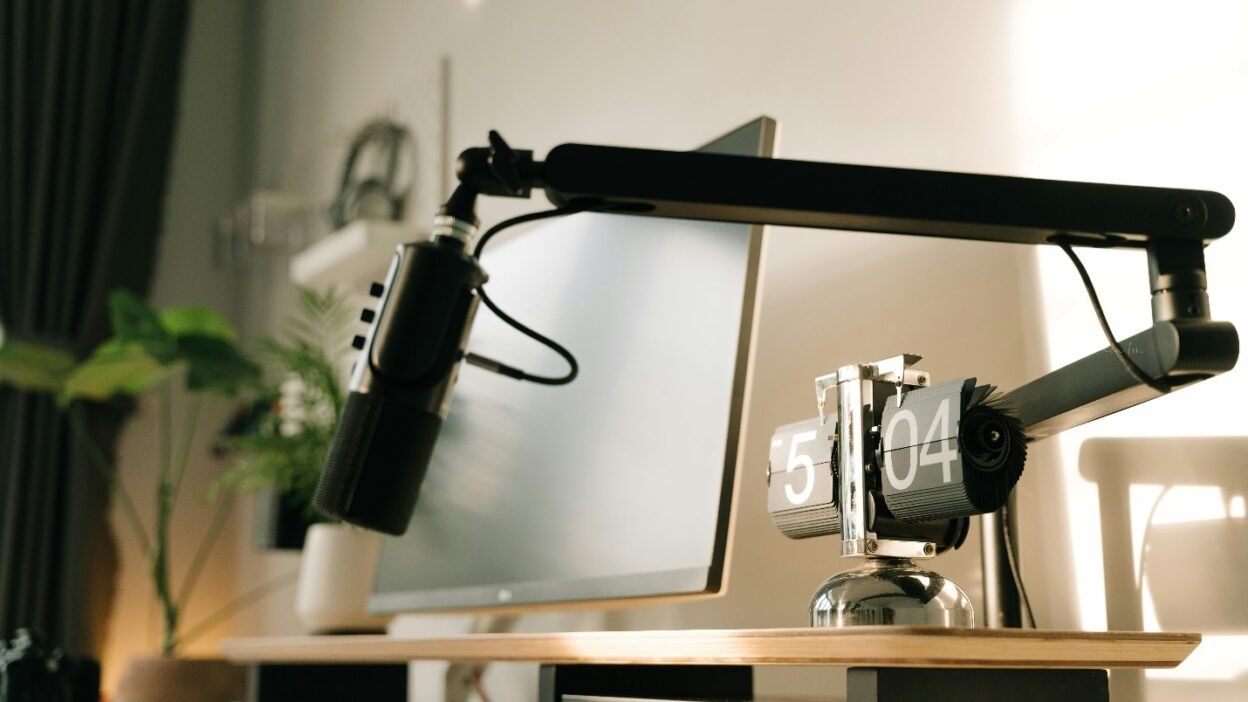In today’s world, more people than ever are creating content from the comfort of their own homes. Whether you’re starting a podcast, recording online courses, streaming live shows, or producing music, the idea of building a small home studio is no longer far-fetched; it’s accessible to anyone with a laptop and a little bit of curiosity. But while it’s easy to get started, one thing quickly becomes clear: not all recordings sound the same.
If you’ve ever listened to a podcast where the voice sounded crisp, warm, and natural, and then compared it to another where the audio was thin or echoey, you immediately understand the difference. The truth is, you don’t need an expensive studio to produce high-quality sound, but you do need the right tools. Among them, your microphone stands out as the single most important piece of equipment. It’s the part of your setup that captures your voice, translates it into a recording, and essentially decides how your audience hears you.
Choosing the right mic can feel overwhelming at first; there are countless options on the market. That’s where expert recommendations and real-world reviews become so valuable. Instead of guessing or overspending, you can find guidance on selecting gear that truly matches your needs. With that in mind, let’s dive into why your microphone deserves to be the very first thing you get right when putting together a home studio.
Choosing the Right Microphone: Where Quality Begins
When setting up your home studio, it’s tempting to think that editing software can fix almost anything. While tools do help, they can’t completely erase problems caused by poor audio capture at the source. That’s why your microphone deserves careful attention from the very beginning.
If you’re building your setup, choosing the best podcast microphone is the first step to producing clear, broadcast-quality audio. A good microphone immediately elevates your recordings, giving your voice warmth, clarity, and presence that editing alone can’t achieve. It’s not about buying the most expensive model; it’s about finding the right fit for your voice and your recording environment.
Dynamic microphones are often recommended for beginners because they’re durable and less sensitive to background noise. Condenser microphones, by contrast, capture more detail and work best in quieter, treated spaces. You’ll also find USB mics, which are plug-and-play, and XLR mics, which provide more flexibility for upgrading later. No matter the type, a well-chosen microphone sets the foundation for high-quality sound.
Audio Interfaces & Mixers: Powering Your Setup
If you go with an XLR setup, you’ll need an audio interface to connect it to your computer. Think of the interface as a translator; it converts the analog signal into digital form so your system can process it. A quality interface also gives you precise control over gain (volume levels) and helps keep the signal clean and free from noise.
For those who want more flexibility, mixers offer multiple channels, EQ controls, and effects, making them great for live shows or multi-guest podcasts. But if you’re just starting out, a simple entry-level interface is often enough to give your recordings a polished, professional edge without overwhelming you with extra gear.
Headphones & Monitoring: Hearing What Your Audience Hears
A solid pair of closed-back headphones is essential in any home studio. They let you monitor in real time, so you can catch noise or mistakes before they ruin a session. Their design also prevents sound from leaking into the mic, keeping recordings clean. Since you’ll spend hours using them, comfort matters. Later, you might add studio monitors for mixing, but headphones are the best place to start.
Acoustic Treatment: The Silent Partner in Your Setup
Even the best gear can’t compensate for a poor recording space. Bare walls, hardwood floors, and empty rooms create echoes that blur and muddy sound. This is where acoustic treatment makes all the difference.
You don’t need a professional studio covered in foam. Simple fixes like rugs, curtains, or bookshelves placed strategically can drastically improve clarity. Adding a few acoustic panels or diffusers around your recording area reduces reflections and gives you a more natural sound profile. The goal isn’t absolute silence but balance so your recordings come through crisp and distraction-free.
Supporting Gear: The Often-Overlooked Essentials
When building a home studio, smaller tools often get overlooked in favor of major equipment. Yet accessories can shape both quality and comfort. Pop filters, for instance, cut down on harsh “p” and “b” sounds that editing software can’t always remove cleanly. Boom arms and shock mounts keep your setup steady, reducing vibrations from desks or keyboards that could travel into the recording.
If your space isn’t ideal, portable sound shields can isolate your voice and control room noise, while cable management systems help reduce interference and keep your workspace organized. Even something as simple as a sturdy stand or a reliable pair of cables ensures a consistent signal flow. These modest, affordable add-ons may not seem critical at first, but together they elevate your recordings and make the entire process smoother and more efficient.
Software & Workflow: From Recording to Polished Sound
Once you’ve captured clean audio, software takes over. Digital audio workstations (DAWs) like Audacity, GarageBand, or Reaper let you record, edit, and enhance with precision. While these tools are powerful, their role is to polish, not rescue, your audio.
Basic edits such as trimming pauses, reducing background noise, and applying EQ or compression can transform raw takes into professional content. Over time, you’ll learn shortcuts and techniques that speed up your workflow and help you develop your own production style.
Building a home studio doesn’t have to be overwhelming. While there are many pieces to consider, it all starts with choosing the right capture device for your voice. That decision sets the tone for everything else, interfaces, headphones, acoustic treatment, and editing software, all built on that foundation.
Clear, professional sound makes your content engaging and trustworthy. Whether you’re recording podcasts, teaching online, or producing music, your audience deserves to hear you at your best. In the end, the right microphone isn’t just another tool; it’s your most valuable creative partner.



